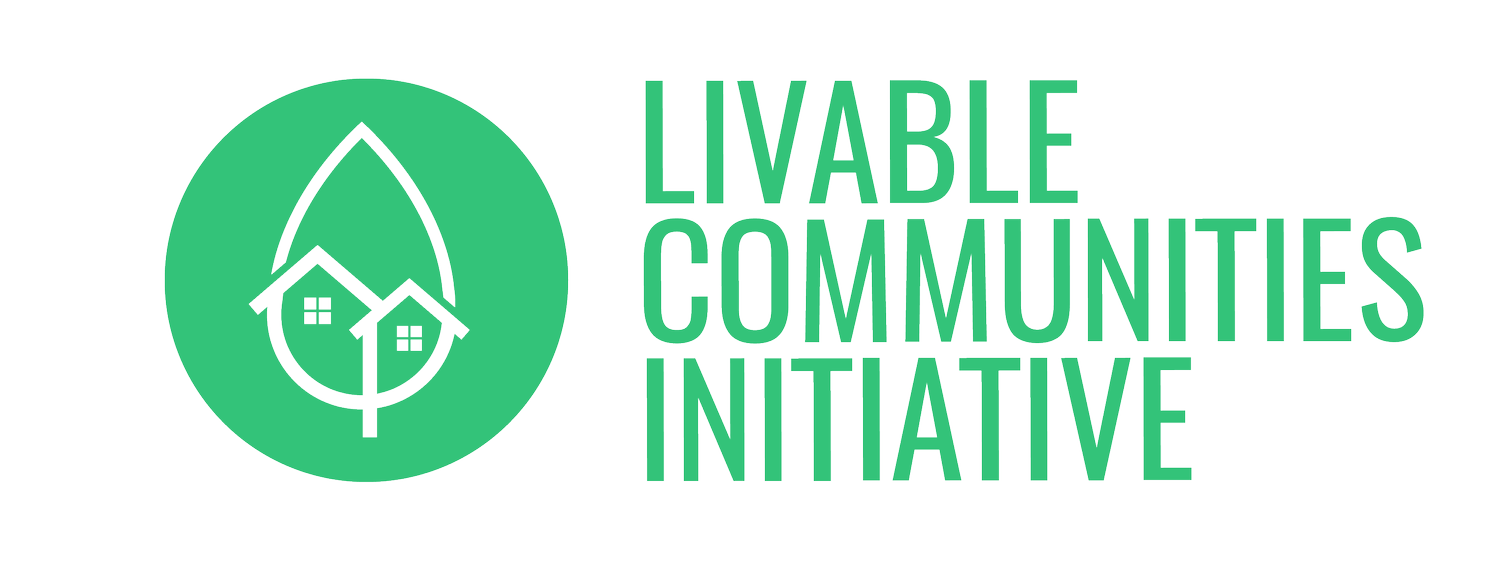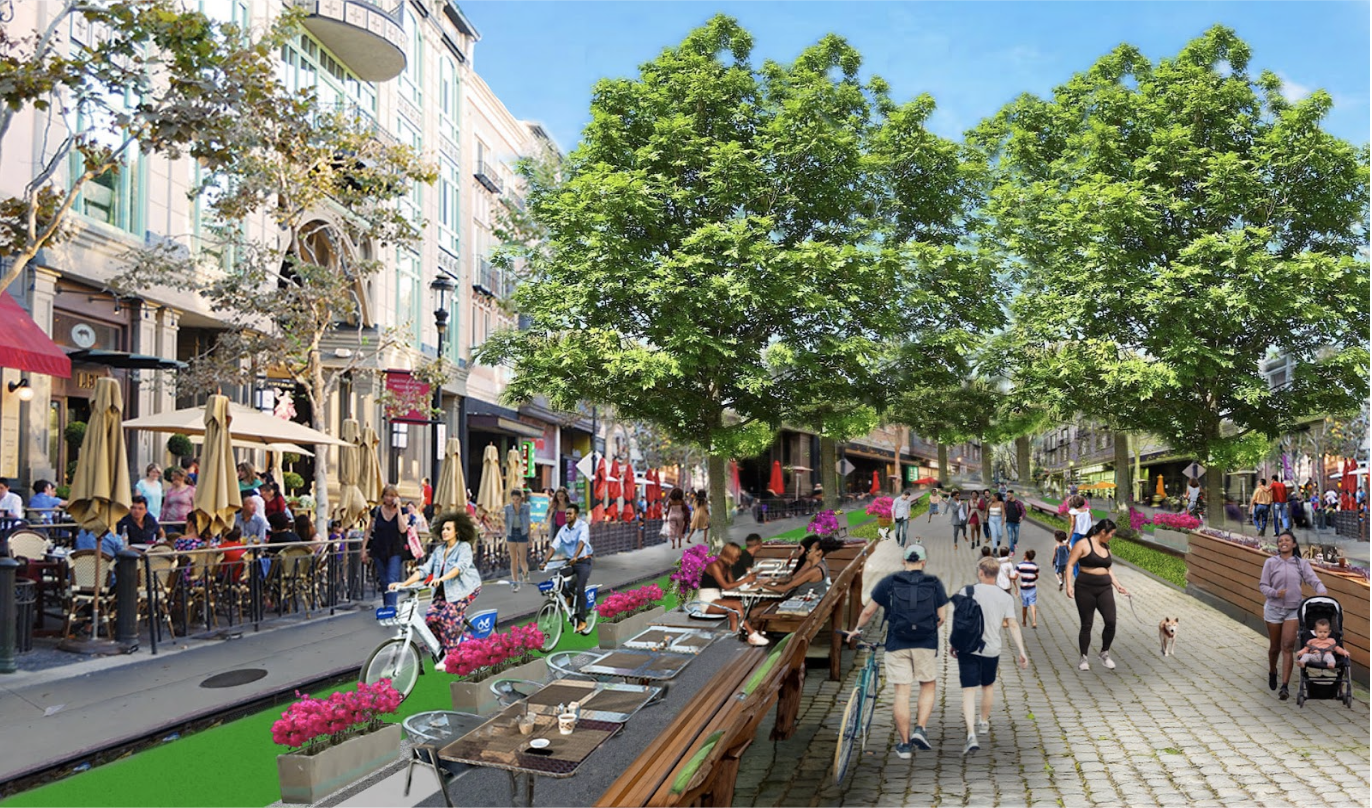Climate Impact
Climate Moonshot
The State of California needs to build 3.5 million homes – we can make this a climate moonshot – and focus on building zero carbon buildings with zero carbon mobility.
Standard Plans can bake in a climate wish list: electrification, solar panels, heat pumps, water reclamation, and traditional climate-appropriate building design – thick walls, cross-breezes and high ceilings that eliminate the need for AC. Transportation emissions can be eliminated or greatly reduced by building 15 minute communities – walkable, bikeable neighborhoods near jobs and around transit where people can live car-free.
Other benefits with can bake into Standard Plans and the LCI:
Colonnades (arches) over the sidewalk lowers temperature inside 10 degrees, eliminates the need for AC
Require sustainable materials
No onsite parking eliminates the embodied carbon of cement
Scaling up Transit Oriented Development (TOD)
The most unique part of the LCI is it leverages two of the region's greatest assets: LA’s historic main streets and villages; and world class transit infrastructure. By targeting main streets that touch high quality transit stops for streamlined development, we can create 15 minute communities in under one year. For example, Culver Blvd and Washington Blvd in Culver City are streets with small retail that directly connect to the Expo Line. Westwood Village and Westwood Blvd touch two Metro stops – the Purple Line (coming soon) and the Expo Line.
And LCI street can create a TOD that is linear – a spoke, rather than a circle.
By combining the elements that make a neighborhood walkable and bikeable with high quality transit options, the LCI can make the goal of transit-oriented development a reality, and create an attractive alternative to driving. The LCI design for our streets is based on best practices in mobility design from Dutch experts and engineers (the world leaders in mobility) and uses the North Star of uncompromising safety for all – “ages 8 to 80” – to create a transportation system that is safe for children, seniors and people with disabilities. There is a saying amongst urbanists: when you build a city for children, you build it for everyone.
VMT and Commutes
The LCI has the potential to reduce commutes across the region. 100,000 people commute into Santa Monica for work, 63,000 people drive into Westwood, and 20% of UCLA students commute in – because there is not enough housing. Students and workers could have the option to eliminate their commutes (which can be 1-2 hours each way), and shed their cars to save on the substantial $8,000-$10,000/year expense. Necessary car trips can easily be replaced with Uber, onsite car sharing, and peer-to-peer car sharing options like Turo.
This is essential because Climate scientists have done the research and are sounding the alarm: EVs cannot scale in time to meet our climate goals (we waited too long). EVs are essential and necessary, but not sufficient, and there is no route to meeting our climate goals that doesn’t include cutting VMT. But the Legislative Analyst’s Office (LAO) for the State of California recently issued a report saying we have no plan to meet our climate goals for VMT - vehicle miles traveled, aka, car trips – which are 28% of climate emissions.
We need alternatives – walking, transit and bikes. But transit needs a first mile/last mile solution to scale, which means Micro-Mobility – bikes and scooters. While the evidence also shows that bike lanes cannot scale unless they are 100% safe, the LCI calls for world-class infrastructure that can scale.
Green space
LCI streets have a lush tree canopy (with a focus on biodiversity) that reduces the heat island effect. Pedestrianized streets can have a linear park that stretches for miles - like Las Ramblas in Barcelona – that incorporate bioswales and native plants. Unused street space on side streets can be repurposed for pocket parks. Parking lots can be pushed underground and replaced with housing and parks. The LCI is an opportunity to create hundreds of parks and playgrounds.
Car Share
Car sharing can allow people to live car free, and it also contributes to a virtuous cycle: (1) Car sharing re-aligns financial incentives towards not driving: for someone who only drives about once/week, a carshare costs $30/day, but the cost of walking, biking, transit, and carpooling are almost free. (2) Car share is a far more efficient use of parking spaces (cars sit idle 95% of the time). (3) Car sharing can be required to be 100% EVs – so we can instantly multiply the number of car trips that are EVs vs ICE (internal combustion engines). (4) Car sharing means households can shed cars, and an excess of used cars creates opportunities to push clunkers out of the system more quickly.
The Big Picture
According to a tool from UC Berkeley, building housing near jobs and in walkable/bikeable 15 minute communities is the most powerful thing LA can do for climate. The LCI combines them VMT reduction (less driving) and Urban Infill (building near jobs):
Sign your name here to support LCI and help bring livable, walkable and bike-able streets to Los Angeles!
Articles & Resources
-

Housing and Architecture
-

Car-Lite Communities
-

Parking Ruins Everything
Technical Papers & Details















